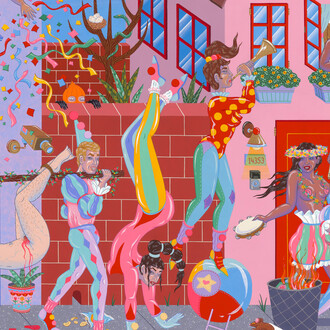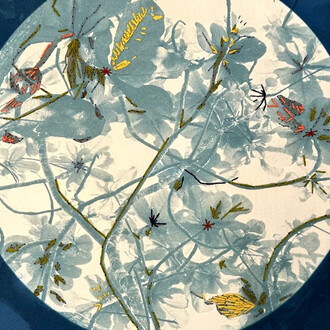How to Make the Universe Right presents a large selection of rare religious scrolls, ceremonial clothing, and ritual objects of the Yao, Tày, Sán Dìu, Cao Lan, Sán Chay, Nùng, and other populations of northern Vietnam and southern China. Each group has their own traditions of educating and initiating priests and shamans, who serve as intermediaries between the physical and spiritual worlds and between the community and deities, in order to make the universe right through healing, balancing the forces of nature, and communicating with ancestors. The Yao’s practices are most prominently associated with Daoism, a religious and philosophical tradition of Chinese origin, while for the other peoples, Daoist beliefs are combined with aspects of Buddhism, Tantrism, and Confucianism.
The works of art in the exhibition, most of which date to the late nineteenth and early twentieth centuries, provide the material foundation for the regional manifestations of religious practices. Examples in the exhibition include vibrantly colored and intricately embroidered ritual robes and headdresses worn by priests, and a spectacular set of eighteen scrolls of elaborately painted deities, made for those engaged in the higher levels of initiation. The exhibition also features a display evoking the shrines constructed for ceremonies, a film on contemporary religious practices in the region, and a selection of scrolls highlighting their recent conservation and what this has revealed.
All of the works on view are part of the Barry and Jill Kitnick Collection generously donated by the Kitnicks to the Fowler Museum at UCLA in 2015.
















